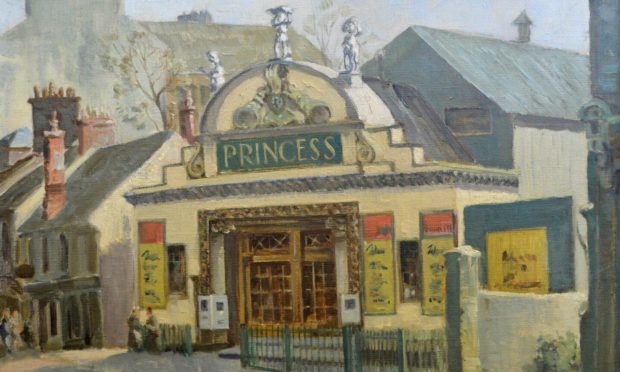A new online exhibition is exploring the way artists have depicted the changing face of Dundee over the years.
What’s more, many of the works on display document parts of the city which no longer exist because they were knocked down.
Dundee – Picturing the City, appears on the Art UK website.
All the work on display is from the University of Dundee museum collections.
Curator Matthew Jarron said: “The University of Dundee has an extensive art and design collection with work by many internationally renowned artists.
“However we also have many paintings, drawings and prints of Dundee itself and this new online exhibition shows a selection of those, revealing different ways that artists have depicted the changing face of the city over the years.
“Dundee has seen many changes over the years, and artists have sometimes sought to capture buildings that were about to be demolished, as well as celebrate new developments.
“From old tenements and pubs to new multis and green spaces, artists have helped us to think about our city in a different light.”
Matthew has shared some of the artwork which is featured in the exhibition which include some parts of Dundee which have changed completely or been lost forever.
Back Tenements, Crichton Street, Dundee, 1900–1932
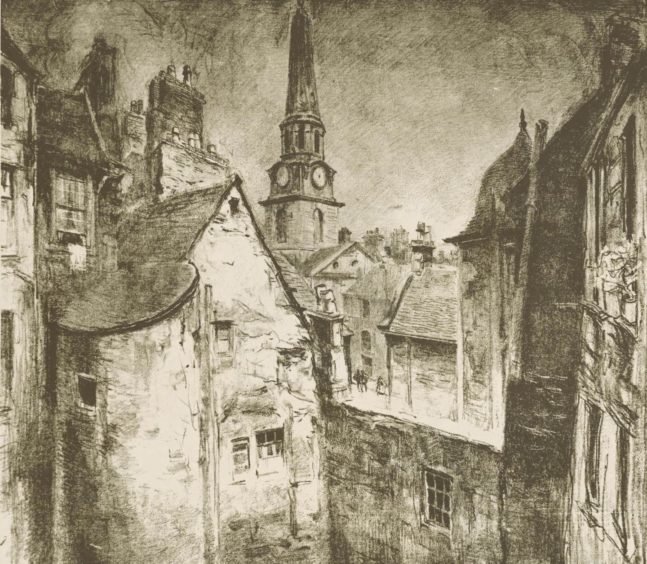
The area behind the Town House was a labyrinth of tightly packed tenements, most of which had become horrendous slums by the time they were demolished.
Tom Ross (1878-1961) was another artist recording parts of the city that would soon disappear forever.
University of Dundee Fine Art Collections.
High Street, Dundee 1914
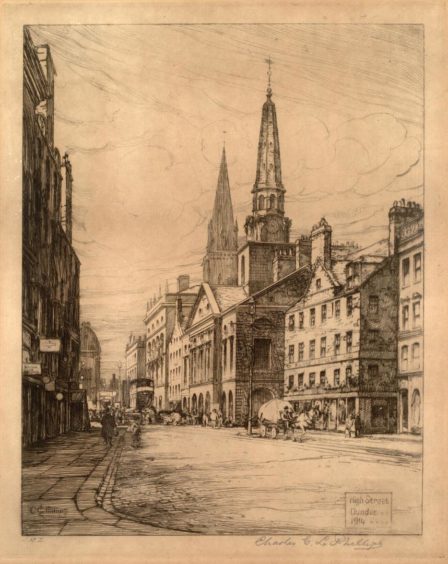
For 200 years, Dundee’s most important civic building was the Town House, built by William Adam in 1732-34.
By the early 20th century it was in poor condition and the city architect James Thomson had plans to tear it down to create a new civic square.
Charles Gustav Louis Phillips (1863-1944) was among the Dundee artists keen to draw the public’s attention to the aesthetic qualities of what was under threat.
University of Dundee Fine Art Collections.
Dundee (Dundee from the Harbour) 1888
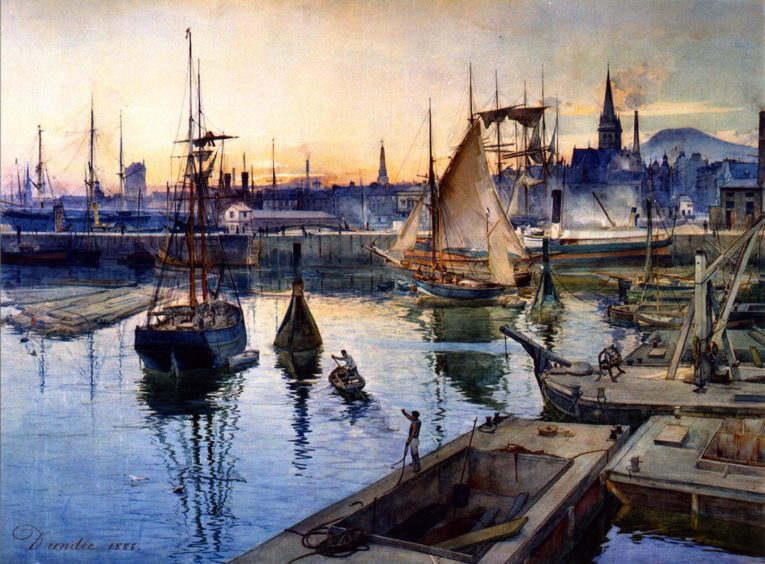
The growth of Dundee’s harbour led to the town gaining a royal charter in 1191 and over the next few centuries it developed into an important trading port.
By the time this busy harbour scene was painted by James Douglas (1858-1911), Dundee was also a major whaling port, whale oil being key to the processing of jute.
University of Dundee Fine Art Collections.
Old Custom House, Greenmarket, Dundee, 1880s
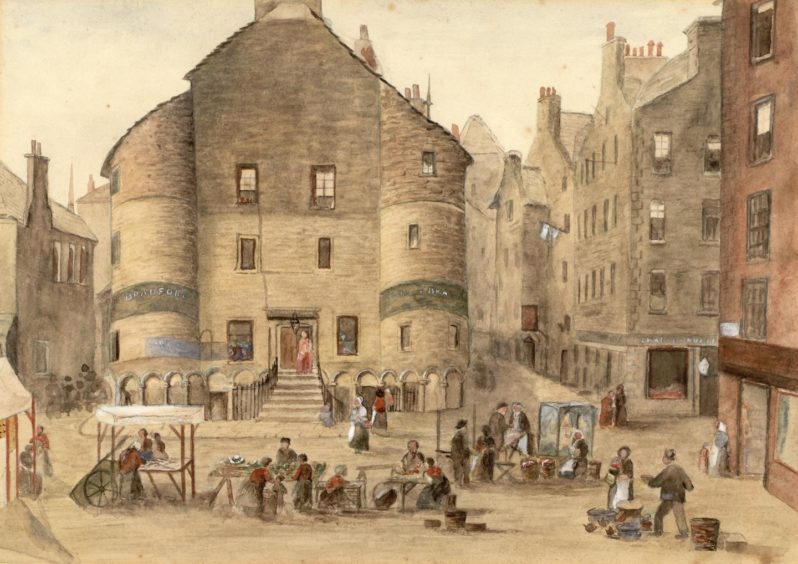
This 16th century building became Dundee’s Custom House until it was replaced by a grander structure in the 19th century (still surviving on Dock Street).
David Small (1845-1927) was one of several topographical artists recording the older parts of the town, many of which (including this building) were demolished in the late Victorian period.
Crichton Street now stands on this site.
University of Dundee Fine Art Collections.
Dundee Flour Mill, 1955
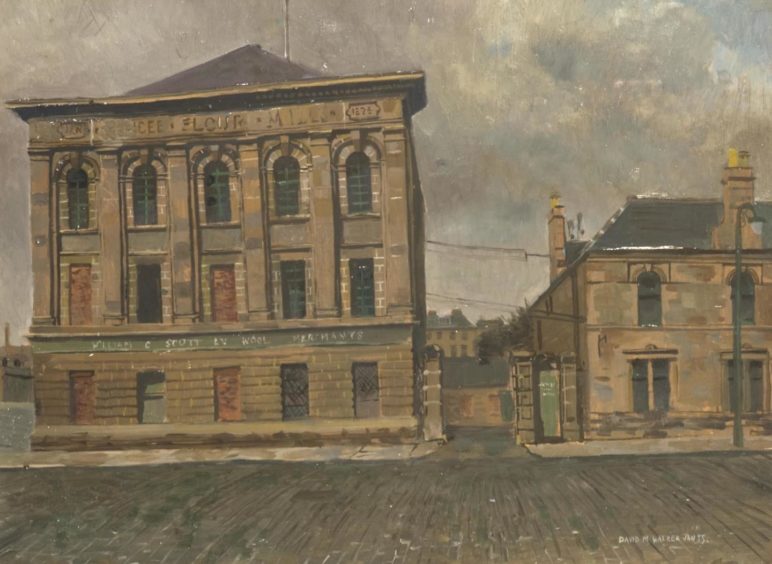
As an art student in the 1950s, David Walker (born 1933) became fascinated by Dundee’s architecture, recording it through drawings and paintings.
This mill was originally owned by John Forbes White, a wealthy flour manufacturer and also notable art collector in Dundee and Aberdeen.
University of Dundee, Duncan of Jordanstone College Collection.
Tenement on the Hilltown, Dundee, 1959
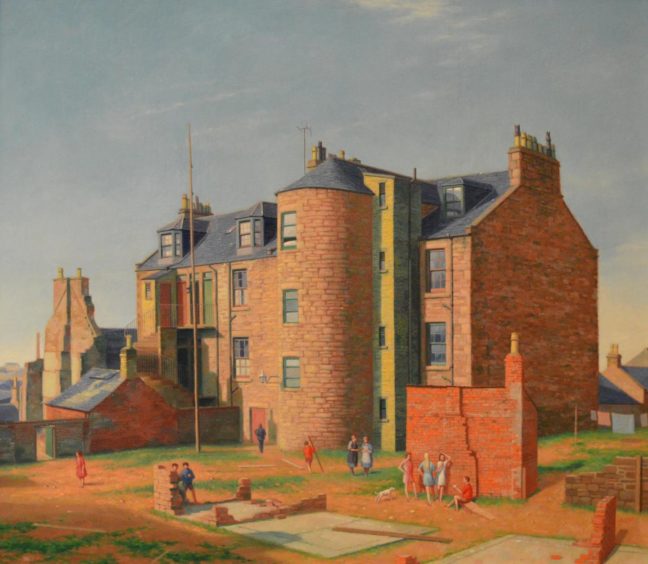
Alec Muir (1930-2020) presents an almost Utopian view of life in the Hilltown, emphasising the social aspects of tenement living.
By this time there were fewer factories operating and many of the worst slums had been demolished, leaving more space and cleaner air.
University of Dundee Fine Art Collections.
A City with the First Snow, 1969
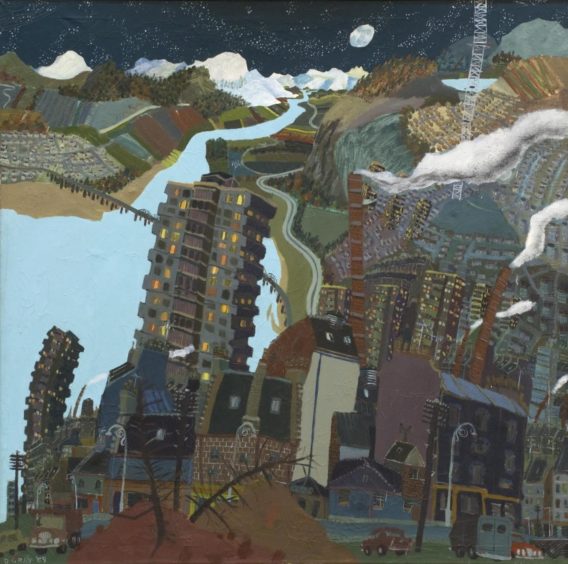
In the 1960s city planners developed a passion for high-rise living, with multi-storey blocks of flats appearing in many parts of the city.
Few artists were keen to capture them on canvas, but Douglas Gray (born 1947) painted a series of imaginary landscapes clearly inspired by Dundee’s multis.
University of Dundee, Duncan of Jordanstone College Collection.
